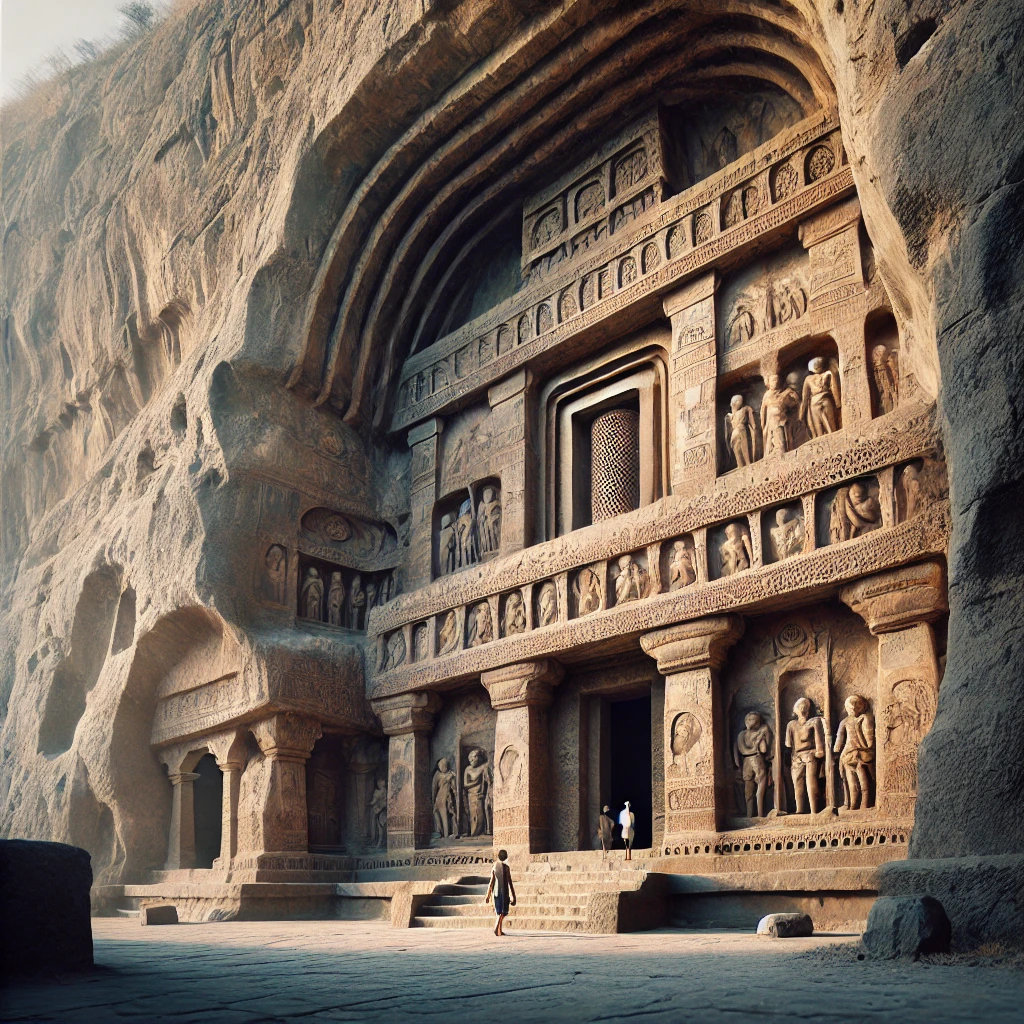
The Ajanta Caves, a UNESCO World Heritage Site in Maharashtra, India, are an exquisite collection of rock-cut Buddhist caves dating back to the 2nd century BCE. Renowned for their intricate sculptures, paintings, and murals, these caves offer a glimpse into ancient Indian Buddhist culture, art, and architecture.
History of Ajanta Caves
The Ajanta Caves were carved in two phases:
- Satavahana Period (2nd century BCE – 1st century CE): The earliest caves (Caves 9, 10, 12, 13, and 15A) were primarily used as prayer halls (Chaityas) and monasteries (Viharas).
- Vakataka Period (5th – 6th century CE): Under King Harishena of the Vakataka dynasty, elaborate paintings and sculptures flourished in later caves (Caves 1, 2, 16, 17, 19, 26). These depict the life of Gautama Buddha and the Jataka tales.
Architecture and Art
The Ajanta Caves consist of 30 caves, each showcasing magnificent frescoes, intricate carvings, and sculptures. Highlights include:
- Cave 1: Stunning mural of Bodhisattva Padmapani.
- Cave 2: Vivid paintings of Buddhist legends.
- Cave 16: Life scenes of Buddha and Jataka stories.
- Cave 19: A grand chaitya (prayer hall) with a towering stupa.
- Cave 26: A colossal reclining Buddha.
Best Time to Visit
The ideal time to visit Ajanta Caves is from October to March, when the weather is pleasant and suitable for sightseeing.
How to Reach Ajanta Caves
| Mode | Details |
|---|---|
| By Air | Nearest airport: Aurangabad Airport (100 km away) |
| By Train | Nearest railway station: Jalgaon (60 km) and Aurangabad (100 km) |
| By Road | Well-connected via buses and taxis from Aurangabad, Jalgaon, and Mumbai |
Entry Fees & Timings
- Indian Nationals: ₹40 per person
- Foreign Tourists: ₹600 per person
- Children (Below 15 years): Free
- Timings: 9:00 AM – 5:30 PM (Closed on Mondays)
Travel Tips
- Wear comfortable shoes as the caves require walking and climbing.
- Photography is allowed, but flash is prohibited inside the caves.
- Hire a local guide for better insights into the history and artwork.
- Carry water and snacks as eateries are limited.
FAQs
Q1: What is special about Ajanta Caves?
Ajanta Caves are famous for their Buddhist murals, rock-cut architecture, and Jataka tales painted on the cave walls.
Q2: Are Ajanta and Ellora Caves the same?
No, Ajanta Caves are Buddhist, while Ellora Caves contain Buddhist, Hindu, and Jain monuments.
Q3: How much time is needed to explore Ajanta Caves?
It takes around 4-5 hours to explore all the caves properly.
Q4: Which is the most famous painting in Ajanta Caves?
The painting of Bodhisattva Padmapani in Cave 1 is one of the most celebrated artworks.
Conclusion
A trip to the Ajanta Caves is a journey through ancient Buddhist history and art. Whether you’re a history enthusiast, an art lover, or a traveler seeking a cultural experience, Ajanta is a must-visit destination in India.
